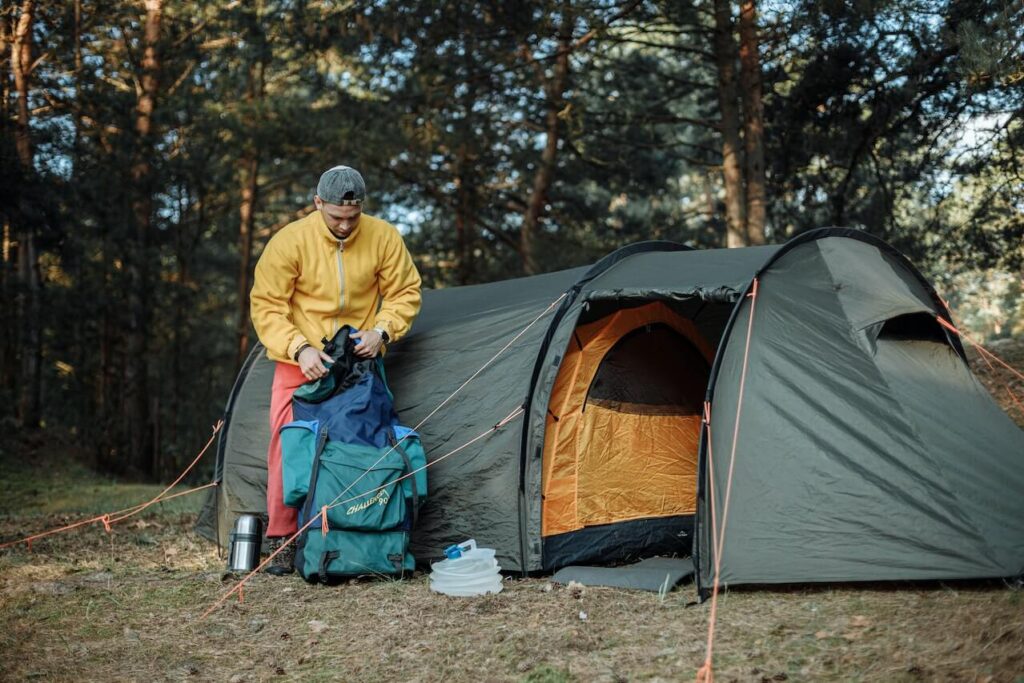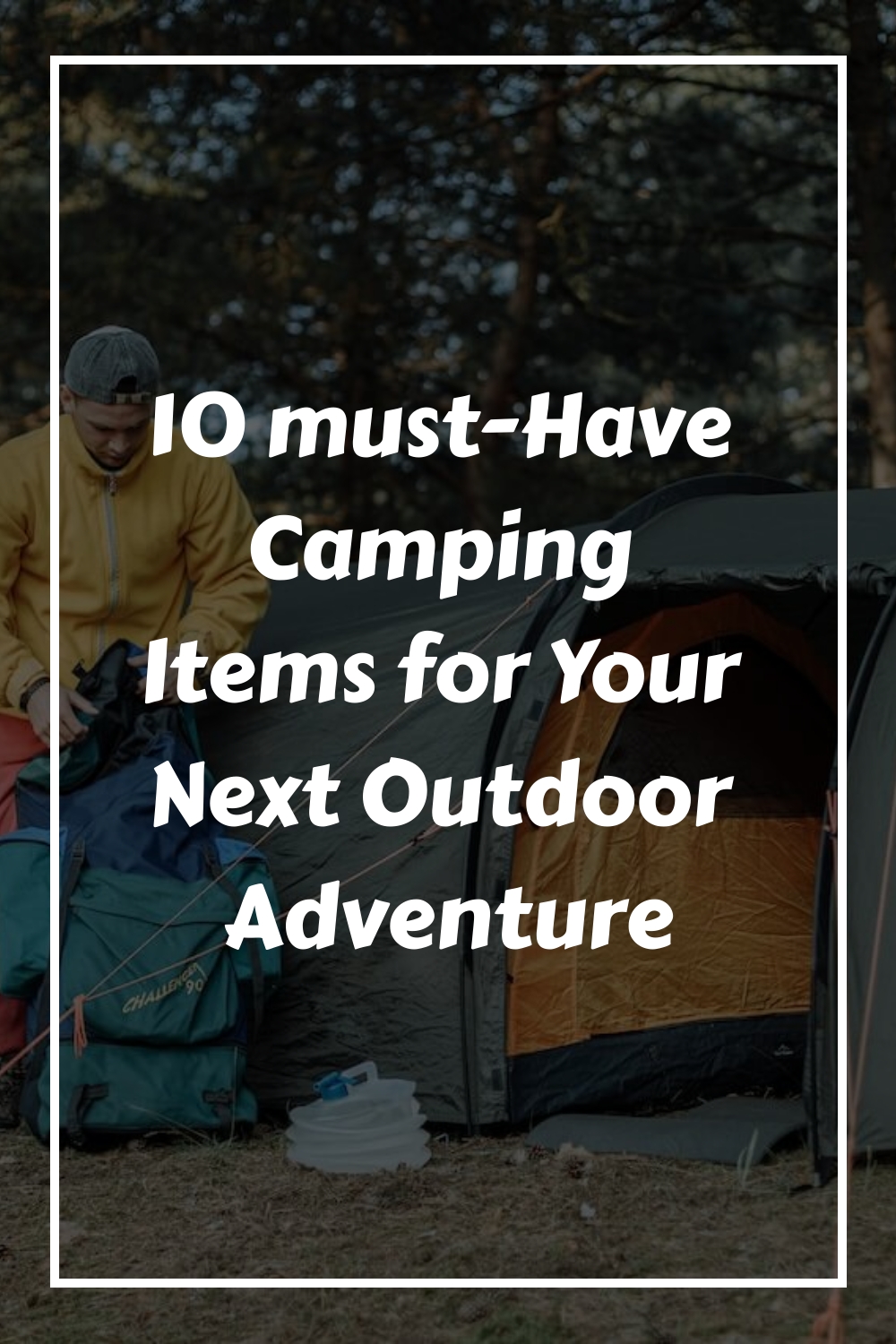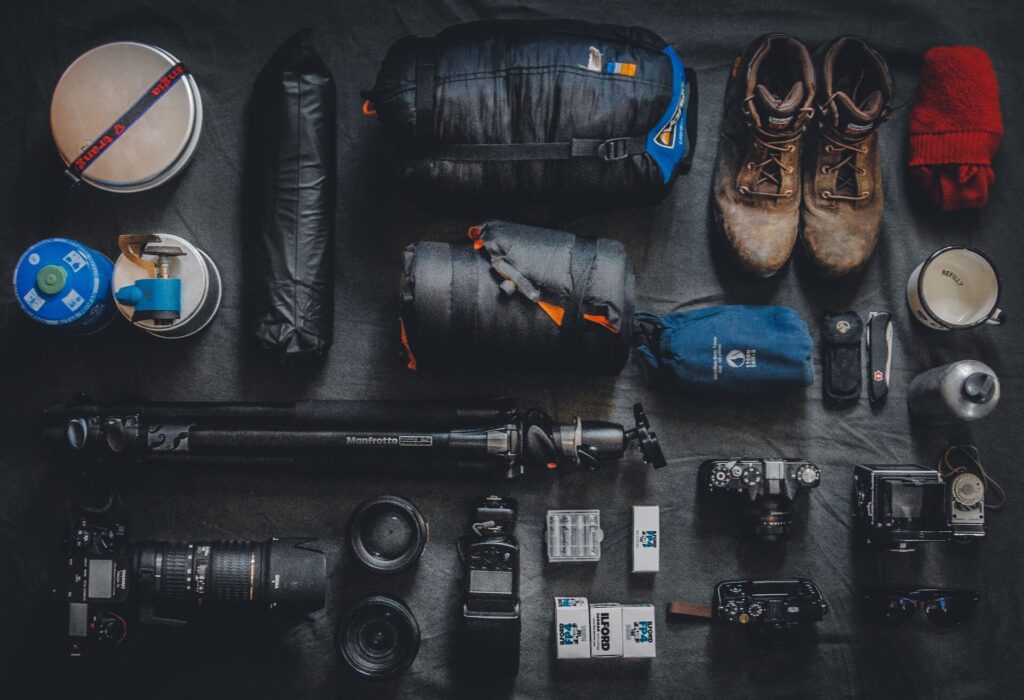
Introduction:
Welcome to the great outdoors! If you’re planning your next camping adventure, it’s essential to be well-prepared with the right gear. Whether you’re a seasoned camper or a newbie to outdoor adventures, having the right camping items can make all the difference in ensuring a safe and enjoyable trip. In this article, we will introduce you to 10 must-have camping items that will help you make the most of your outdoor experience. From shelter and cooking gear to lighting and navigation tools, these essential items will ensure you have a successful and memorable camping trip. So, grab your backpack and get ready to embark on your next adventure with these camping essentials!
Choosing the Right Camping Gear:
Factors to Consider: This section delves into the key factors that should be taken into account when selecting camping gear for your outdoor adventure. These factors include:
Season and Climate:
The season and climate of your camping destination play a crucial role in determining the type of gear you will need. For example, if you are camping in the winter, you will require gear that can withstand cold temperatures, such as a four-season tent, a warm sleeping bag, and insulated clothing. On the other hand, if you are camping in the summer, you may need lightweight and breathable gear, such as a three-season tent and a summer-weight sleeping bag.
Activity and Location:
The type of activities you plan to engage in and the location of your camping trip also impact the gear you need. For instance, if you plan to do hiking or backpacking, you will need lightweight and compact gear that can easily be carried in your backpack. If you are camping in a remote location without access to amenities, you may require camping gear with self-sustaining features, such as a portable water filter or a camp stove.
Budget and Durability:
Your budget is an essential factor in selecting camping gear. It’s important to strike a balance between quality and affordability. Investing in durable and reliable gear may cost more upfront, but it can save you money in the long run as it is likely to last longer. Look for gear made from high-quality materials that can withstand the rigors of outdoor use and weather conditions.
Weight and Size:
The weight and size of your camping gear can significantly impact your comfort and mobility during your outdoor adventure. Lighter and more compact gear is generally preferred for backpacking or hiking trips, as it allows for easier transportation. Consider the weight and size of items such as tents, sleeping bags, camping chairs, and cooking equipment when making your gear choices.
Personal Preferences:
Everyone has their own personal preferences when it comes to camping gear. Some may prioritize comfort, while others may focus on versatility or style. Consider your individual needs and preferences when selecting camping gear, and choose items that align with your comfort level, camping style, and personal preferences.
Top 10 Must-Have Camping Items for Your Outdoor Adventure
Camping is an exciting outdoor activity that allows you to connect with nature, unwind, and create lasting memories. To ensure a successful camping trip, it’s essential to have the right gear, and a tent is one of the most critical items. Your tent serves as your shelter in the wilderness, providing protection from the elements and a comfortable place to rest.

1. Tent – Your Shelter in the Wilderness
A tent is your home away from home when camping, and it’s crucial to choose the right type of tent that suits your needs and preferences. In this section, we’ll discuss the different types of tents, size and capacity considerations, as well as setup and features to look for.
Types of Tents
Tents come in various types, each with its own advantages and disadvantages. Some common types of tents include:
- Dome Tents: These tents have a rounded dome shape and are popular for their stability and ease of setup. They usually have two or more poles that crisscross over the top, creating a dome-like structure.
- Cabin Tents: Cabin tents are known for their vertical walls, which provide ample headroom and interior space. They are ideal for families or groups who need more room to move around and store gear.
- Backpacking Tents: Backpacking tents are lightweight and designed for easy transport, making them suitable for backpackers and hikers who need to carry their tent along with other gear. They usually have a more streamlined shape and may sacrifice some interior space for weight savings.
- Tunnel Tents: Tunnel tents are elongated and have a series of interconnected poles that create a tunnel-like shape. They are lightweight and easy to set up, making them ideal for backpacking or camping in windy conditions.
Size and Capacity
The size and capacity of a tent are crucial considerations when choosing the right tent for your camping trip. Tent sizes are usually classified by the number of people they can comfortably sleep, such as 1-person, 2-person, 4-person, etc. However, it’s important to note that tent capacities can vary depending on the brand and style, and it’s often recommended to go for a tent with a slightly higher capacity than the number of people in your group to allow for extra space and gear storage.
In addition to the sleeping capacity, tent size also affects the interior space and livability. Some tents may have additional vestibules or awnings that provide extra storage or sheltered space outside the main sleeping area. It’s important to consider your comfort needs and the amount of gear you’ll be bringing along when choosing the size of your tent.
Setup and Features
The setup and features of a tent can greatly impact your camping experience. Look for tents with easy-to-follow setup instructions, color-coded poles, and quick-attach clips or buckles for hassle-free setup. Some tents may also come with additional features such as rainfly, ventilation windows, gear pockets, and built-in LED lights, which can enhance the functionality and comfort of the tent.
Consider the material and quality of the tent as well. Look for tents made from durable and waterproof materials, with reinforced seams and sturdy zippers to withstand different weather conditions. Ventilation is also important to prevent condensation inside the tent, so look for tents with mesh windows or vents for proper airflow.

2. Sleeping Bag – Stay Warm and Comfortable
A sleeping bag is a crucial piece of camping gear that provides insulation and comfort, helping you stay warm and cozy during your camping trip. In this section, we’ll discuss the key factors to consider when choosing a sleeping bag, including temperature rating, insulation type, and shape and size.
Temperature Rating
One of the most important factors to consider when choosing a sleeping bag is its temperature rating. The temperature rating indicates the lowest temperature at which the sleeping bag is designed to keep you warm. It’s important to choose a sleeping bag with a temperature rating that matches the expected weather conditions of your camping destination.
Sleeping bags usually come with three temperature ratings: comfort rating, lower limit rating, and extreme rating. The comfort rating is the temperature at which an average person can sleep comfortably without feeling too cold. The lower limit rating is the temperature at which a person can still sleep without experiencing hypothermia or extreme discomfort. The extreme rating is the lowest temperature at which the sleeping bag can provide some level of survival protection, but it’s not recommended to rely on this rating for regular use.
When choosing a sleeping bag, consider the expected weather conditions of your camping destination and choose a sleeping bag with a temperature rating that provides enough warmth for those conditions to keep you comfortable and safe throughout the night.
Insulation Type
Sleeping bags come with different types of insulation, which affects their warmth, weight, and compressibility. The most common insulation types are:
- Down Insulation: Down is a natural insulation material made from the soft, fluffy feathers of ducks or geese. Down insulation is known for its excellent warmth-to-weight ratio, meaning it provides a lot of warmth without adding much weight to the sleeping bag. Down sleeping bags are also highly compressible, making them ideal for backpacking or camping trips where weight and pack size are important considerations.
- Synthetic Insulation: Synthetic insulation is made from man-made materials such as polyester or nylon. Synthetic insulation is generally less expensive than down insulation and performs better in wet conditions as it retains its insulation properties even when damp. Synthetic sleeping bags are also hypoallergenic and dry faster than down sleeping bags. However, they are usually heavier and less compressible than down sleeping bags.
Shape and Size
The shape and size of a sleeping bag also play a significant role in its comfort and performance. Sleeping bags come in various shapes, including rectangular, mummy, and semi-rectangular.
- Rectangular sleeping bags are roomy and provide more space to move around, making them suitable for car camping or camping trips where weight and pack size are not major concerns. However, they may not be as warm as other shapes as they have more empty space to heat.
- Mummy sleeping bags are tapered towards the feet and have a hood that helps trap heat, making them more thermally efficient and suitable for colder weather conditions. They are also more lightweight and compressible than rectangular sleeping bags, making them ideal for backpacking or camping trips where weight and pack size are important considerations. However, mummy sleeping bags can feel restrictive and may not be as comfortable for those who prefer more room to move around.
Semi-rectangular sleeping bags offer a balance between the roominess of rectangular sleeping bags and the thermal efficiency of mummy sleeping bags. They provide some space to move around while still maintaining a tapered shape towards the feet and a hood for added warmth. Semi-rectangular sleeping bags are suitable for those who want a good balance between comfort and warmth.
When choosing the size of a sleeping bag, it’s important to consider your height and body shape. Sleeping bags come in different lengths, and it’s crucial to choose a sleeping bag that is long enough to cover your entire body comfortably. If a sleeping bag is too short, it can leave your feet or head exposed, resulting in heat loss and discomfort during the night.
In addition to the length, consider the width of the sleeping bag as well. Some sleeping bags come in regular or wide widths, accommodating different body shapes and sleeping positions. If you tend to move around a lot during your sleep or prefer a roomier feel, a wide-width sleeping bag may be more suitable for you.

3. Camping Stove – Cook Delicious Meals Outdoors
One of the joys of camping is cooking meals over an open flame and enjoying delicious hot food in the great outdoors. A camping stove is an essential piece of camping gear that allows you to prepare meals conveniently and efficiently during your camping trip.
Types of Camping Stoves
There are several types of camping stoves available in the market, each with its advantages and disadvantages. The most common types of camping stoves include:
- Propane Stoves: Propane stoves are easy to use and provide consistent heat output, making them ideal for cooking meals quickly. They are also versatile, as they can be used for camping, backpacking, and other outdoor activities. Propane stoves typically come with one or more burners and have adjustable heat controls, allowing you to control the flame intensity for precise cooking.
- Liquid Fuel Stoves: Liquid fuel stoves are versatile and reliable, as they can operate on various types of liquid fuels such as white gas, kerosene, and diesel. They are known for their high heat output and can perform well in extreme weather conditions, making them suitable for camping in cold or high-altitude environments. However, liquid fuel stoves require priming and maintenance, and the fuel can be messy to handle.
- Canister Stoves: Canister stoves are compact and lightweight, making them popular among backpackers and minimalist campers. They use pre-filled canisters containing a mixture of propane and butane as fuel, which makes them easy to set up and operate. Canister stoves are known for their fast boiling times and simmering capabilities, making them suitable for cooking a wide range of meals. However, canister stoves may not perform well in extremely cold temperatures and may require carrying multiple canisters for longer trips.
Fuel Type
The type of fuel used in camping stoves is an essential consideration when choosing a camping stove. Propane, white gas, kerosene, diesel, and butane are some of the common types of fuel used in camping stoves. Each fuel type has its advantages and disadvantages, and the availability of fuel may vary depending on your camping location.
Propane is a popular fuel choice for camping stoves due to its ease of use, availability, and clean-burning properties. Propane stoves typically come with propane canisters that are readily available in most camping stores. They are easy to set up, provide consistent heat output, and are suitable for cooking a wide range of meals.
White gas, also known as Coleman fuel, is a common choice for liquid fuel stoves. It is a clean-burning fuel that performs well in extreme weather conditions and at high altitudes. However, white gas stoves require priming and maintenance, and the fuel can be harder to find compared to propane.
Kerosene and diesel are other fuel options for liquid fuel stoves. They are known for their high heat output and can perform well in cold temperatures. However, they may require more maintenance and are not as readily available as propane or white gas.
Butane is commonly used in canister stoves due to its convenience and ease of use. Butane canisters are readily available in most camping stores, and canister stoves are known for their fast boiling times and simmering capabilities. However, butane may not perform well in extremely cold temperatures, and the canisters may not be as widely available in remote camping locations.
Size and Weight
The size and weight of a camping stove are important considerations, especially if you plan to carry it during backpacking or hiking trips. Camping stoves come in various sizes and weights, and the choice depends on your camping style and needs.
Size and weight are typically inversely proportional in camping stoves. Smaller stoves are usually lighter and more compact, making them ideal for backpacking or camping with limited space. Larger stoves, on the other hand, may offer more burners and cooking space, but they can be heavier and bulkier, making them more suitable for car camping or camping in a fixed base camp.
When considering the size and weight of a camping stove, think about the number of burners you need, the cooking space required for your meals, and the overall portability of the stove. If you need to carry the stove in your backpack, look for lightweight and compact options that won’t weigh you down during your hikes. If you have more space and transportation options, you can consider larger stoves with more features and cooking capabilities.
Additionally, the size and weight of the fuel canisters or liquid fuel bottles should also be taken into account, as they can add to the overall weight and bulk of the camping stove. Canister stoves with smaller canisters are usually lighter and more compact, while liquid fuel stoves may require carrying fuel bottles that can be heavier and take up more space.

4. Headlamp – Illuminate Your Way at Night
A headlamp is an essential camping gear for outdoor adventures, especially during nighttime activities such as hiking, camping, or navigating around the campsite. When choosing a headlamp, several factors should be considered:
Brightness and Beam Distance:
The brightness of a headlamp is typically measured in lumens, which indicates the intensity of the light output. Higher lumens generally provide brighter illumination, which is useful for tasks that require more visibility, such as hiking on rugged trails or cooking in the dark. The beam distance refers to how far the headlamp can project light, which is crucial for navigating long distances or spotting potential obstacles. Consider the brightness and beam distance based on your specific needs and the activities you plan to do during your outdoor adventure.
Battery Life and Battery Type:
The battery life of a headlamp is an important factor to consider, especially for extended camping trips. Look for headlamps with the longer battery life that can last throughout your camping trip without constantly needing battery replacements. Additionally, consider the type of batteries used by the headlamp, whether it’s rechargeable or disposable batteries. Rechargeable batteries are environmentally friendly and cost-effective in the long run, while disposable batteries may be more convenient for shorter trips or when recharging is not possible.
Comfort and Adjustability:
A comfortable and adjustable headlamp is crucial for a pleasant camping experience. Look for headlamps with adjustable headbands that can fit securely and comfortably on your head, ensuring that it doesn’t slip or bounce during activities. Consider the weight and ergonomics of the headlamp, as a heavy or poorly designed headlamp can cause discomfort and strain during prolonged use. Some headlamps also come with additional features such as tilting or swiveling heads, which allow you to direct the light where you need it the most.

5. Backpack – Carry Your Essentials with Ease
A backpack is an essential camping gear that allows you to carry your essentials with ease during your outdoor adventure. When choosing a backpack for camping, several factors should be considered:
Backpack Types and Sizes:
There are various types and sizes of backpacks available for camping, including daypacks, overnight backpacks, and multi-day backpacks. Daypacks are typically smaller and designed for short hikes or day trips, while overnight and multi-day backpacks are larger and designed to carry more gear for longer camping trips. Consider the duration of your camping trip and the amount of gear you need to carry when selecting the appropriate backpack size.
Suspension System and Comfort:
The suspension system of a backpack refers to the design and features that distribute the weight of the backpack and provide support to the wearer. A good suspension system is crucial for comfort and ease of carrying, especially when hiking or trekking for long distances. Look for backpacks with padded shoulder straps, adjustable sternum straps, and hip belts that can effectively distribute the weight of the backpack and reduce strain on your shoulders and back. Additionally, consider the ventilation system of the backpack, such as mesh back panels or airflow channels, which can help to reduce sweating and increase comfort during hot and humid conditions.
Organization and Accessibility:
Efficient organization and accessibility of gear inside the backpack can greatly enhance your camping experience. Look for backpacks with multiple compartments, pockets, and loops that allow you to neatly store and access your gear. Consider the accessibility of important items such as water bottles, snacks, and maps, as well as the convenience of accessing your gear without having to unpack the entire backpack. Some backpacks also come with external attachment points, such as gear loops or daisy chains, which can be useful for attaching additional gear or accessories.
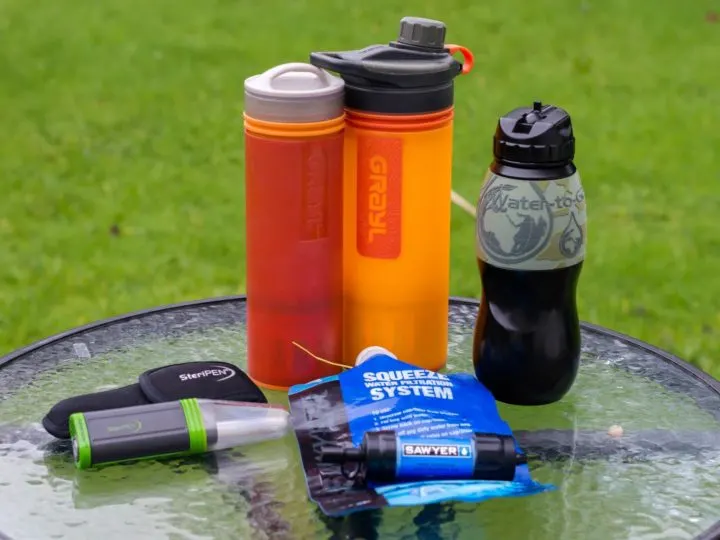
6. Water Filter – Stay Hydrated Safely
Clean and safe drinking water is crucial for any camping trip. However, finding a reliable source of water in the wilderness may not always be easy. That’s where a water filter comes in handy. When choosing a water filter for camping, here are some factors to consider:
Types of Water Filters:
There are various types of water filters available for camping, including pump filters, gravity filters, squeeze filters, and straw filters. Pump filters typically require manual pumping to force water through the filter, while gravity filters rely on gravity to allow water to pass through the filter. Squeeze filters involve manually squeezing the water through the filter, and straw filters allow you to drink directly from a water source through a straw with an integrated filter. Each type of water filter has its pros and cons, and the best one for you depends on your camping needs, preferences, and ease of use.
Filter Technology and Flow Rate:
The filter technology used in the water filter can greatly affect its performance. Common filter technologies include ceramic filters, carbon filters, and hollow fiber filters. Ceramic filters are effective at removing bacteria and protozoa but may not effectively remove viruses, while carbon filters are good at removing taste and odor but may not be as effective against bacteria and protozoa.
Hollow fiber filters are known for their high flow rate and effectiveness against a wide range of contaminants. Consider the filtration capabilities of the water filter and the flow rate, which determines how fast the filter can produce clean water. A higher flow rate can be beneficial when filtering a large volume of water quickly, while a lower flow rate may be acceptable for personal use or smaller groups.
Size and Weight:
The size and weight of the water filter are important considerations for camping, as you’ll likely be carrying it in your backpack. Look for water filters that are lightweight, compact, and portable. Consider the size of the filter, including its dimensions when packed, and its weight, as it will add to the overall weight of your backpack. Additionally, consider the ease of setup and use, as well as the maintenance requirements of the water filter, including how often the filter needs to be replaced or cleaned.
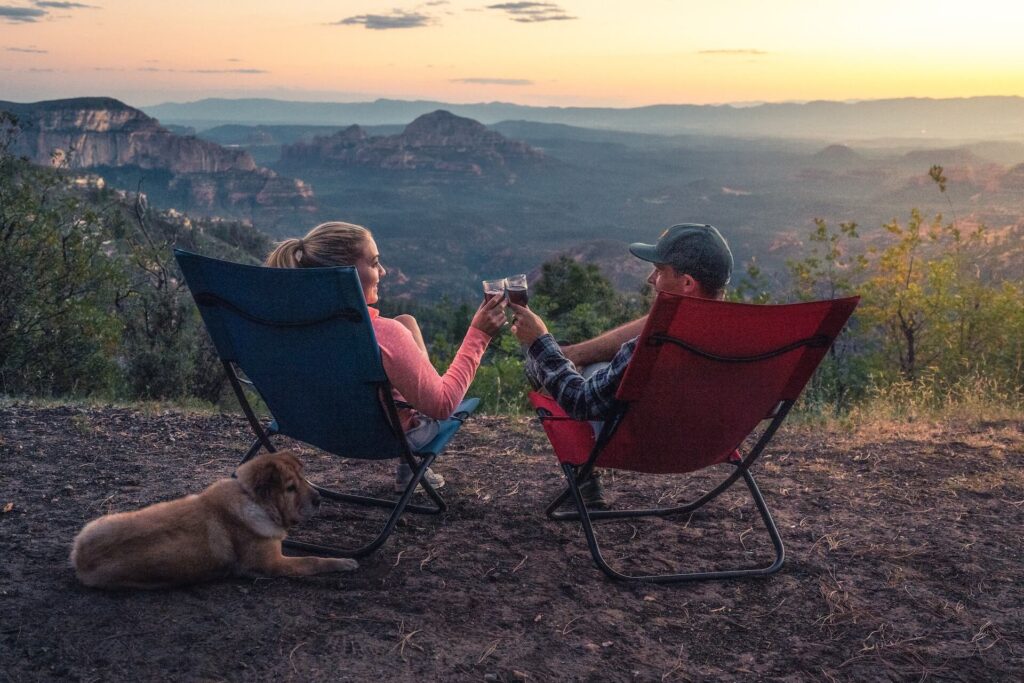
7. Camp Chairs – Relax and Enjoy the Campsite
After a long day of hiking or exploring the wilderness, having a comfortable place to relax and unwind at your campsite is essential. Camp chairs provide a convenient seating option that allows you to kick back and enjoy the campsite. When selecting a camp chair, here are some factors to consider:
Types of Camp Chairs:
There are various types of camp chairs available, ranging from lightweight and compact options to more luxurious and comfortable chairs. Common types of camp chairs include traditional folding chairs, backpacking chairs, and portable rocking chairs. Traditional folding chairs are typically larger and offer more stability and comfort while backpacking chairs are designed to be lightweight and compact for easy transportation during backpacking trips. Portable rocking chairs provide a unique rocking motion for added relaxation. Consider the type of camping you’ll be doing, the amount of space available at your campsite, and your comfort preferences when choosing a camp chair.
Comfort and Stability:
Comfort and stability are important factors to consider when selecting a camp chair. Look for camp chairs with padded seats and backrests, as well as armrests, for added comfort during extended sitting. Some chairs may also have additional features such as headrests, cup holders, or side pockets for added convenience. Stability is crucial to ensure that the chair remains sturdy and safe to use on uneven or rugged terrain. Consider the weight capacity of the chair, the materials used in its construction, and the design of its frame to determine its stability.
Size and Portability:
The size and portability of a camp chair are important considerations, especially if you need to transport it to and from your campsite. Look for camp chairs that are lightweight and compact, making them easy to carry in your backpack or attach to your camping gear. Some chairs may come with carrying cases or straps for convenient transportation. Consider the dimensions of the chair when folded and its weight, as it will add to the overall weight of your camping gear. Additionally, think about how easy the chair is to set up and pack down, as well as its durability and resistance to outdoor elements.

8. Multi-Tool – Versatile Tool for Various Tasks
A multi-tool is a versatile and essential tool for camping that can come in handy for various tasks. From repairing gear to preparing food, a multi-tool can be a valuable addition to your camping gear. Here are some details to consider when selecting a multi-tool:
Types of Multi-Tools:
There are many different types of multi-tools available, ranging from compact pocket-sized options to larger, more comprehensive tools. Common types of multi-tools include folding multi-tools, keychain multi-tools, and credit card-sized multi-tools. Folding multi-tools typically feature a folding design with multiple tools that fold into the handle, making them compact and easy to carry. Keychain multi-tools are small and lightweight, designed to attach to your keychain for easy access. Credit card-sized multi-tools are slim and can fit in your wallet like a credit card, providing a discreet and convenient option. Consider the type of tasks you anticipate needing the multi-tool for and the level of portability you require when choosing a multi-tool type.
Tools and Functions:
Multi-tools come with various tools and functions, which can vary depending on the brand and model. Common tools found in multi-tools include pliers, knives, screwdrivers, can openers, bottle openers, saws, scissors, and wire cutters, among others. Some multi-tools may also have special tools for specific tasks, such as fire starters or wrenches. Consider the tools and functions that are most relevant to your camping needs and ensure that the multi-tool you choose has the necessary tools to fulfill those requirements.
Size and Durability:
The size and durability of a multi-tool are important considerations. Look for a multi-tool that is compact and lightweight, making it easy to carry in your pocket, backpack, or attached to your gear. However, keep in mind that smaller multi-tools may have fewer tools and functions compared to larger ones. Durability is also crucial, as the multi-tool will be subjected to outdoor conditions and heavy use. Look for multi-tools made from high-quality materials such as stainless steel, which are known for their durability and resistance to rust and corrosion.
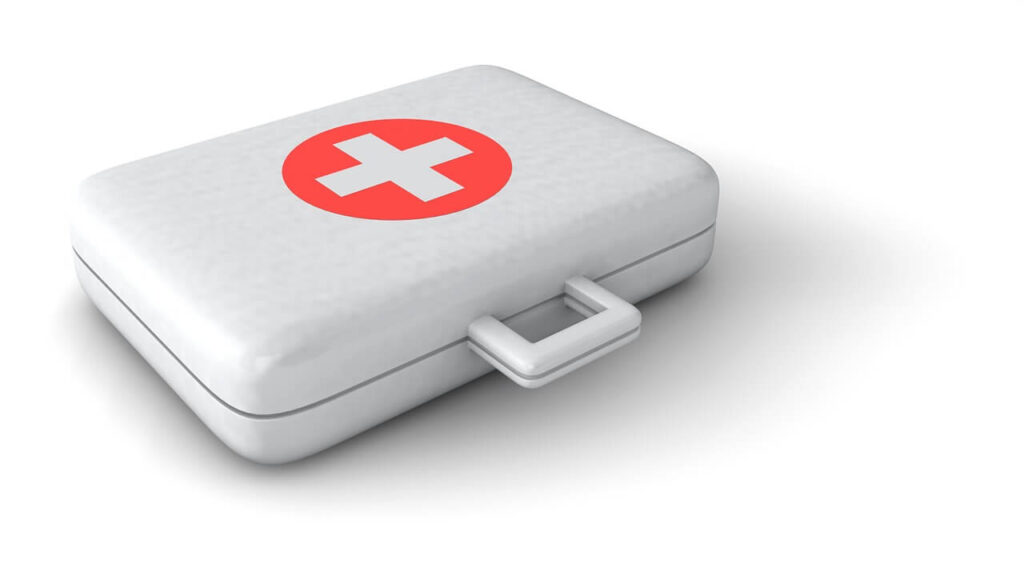
9. First Aid Kit – Be Prepared for Emergencies
A first aid kit is an essential item for any camping adventure as it allows you to be prepared for emergencies and provide basic medical care when needed. Here are some details to consider when selecting a first-aid kit for camping:
Basic First Aid Kit Contents:
A basic first aid kit should include essential items for treating minor injuries and basic medical care. This may include adhesive bandages, gauze pads, adhesive tape, antiseptic wipes or solutions, scissors, tweezers, disposable gloves, CPR mask, pain relievers, and any necessary medication for personal health conditions. It’s important to ensure that your first aid kit includes basic items to clean, dress, and protect minor wounds, as well as items for common ailments such as headaches or allergies.
Additional Items for Outdoor Adventures:
In addition to the basic first aid kit contents, it’s important to consider additional items that may be specifically needed for outdoor adventures. This may include items such as blister pads, insect repellent, sunscreen, a whistle, an emergency blanket, and a compass. If you have any specific medical conditions or allergies, make sure to include any necessary medications or treatments in your first aid kit. Additionally, if you are camping in a remote or wilderness area, consider including items such as a tourniquet, splint, or snake bite kit, depending on the potential risks of your camping location.
Size and Portability:
The size and portability of your first aid kit are important considerations, as it needs to be easily carried and readily accessible during your camping adventure. Look for a first aid kit that is compact, lightweight, and easy to pack in your backpack or camping gear. Consider the size and weight of the first aid kit in relation to the other items you will be carrying, and ensure that it doesn’t add unnecessary weight or take up too much space. Some first aid kits come in durable and waterproof cases or bags, which can help protect the contents from moisture and damage, especially in outdoor environments.

10. Portable Power Bank – Keep Your Electronics Charged
In today’s digital age, many campers rely on electronic devices such as smartphones, cameras, GPS devices, and other gadgets during their outdoor adventures. Having a reliable portable power bank can ensure that you can keep your electronics charged even when you’re away from traditional power sources. Here are some details to consider when selecting a portable power bank for camping:
Capacity and Output:
The capacity and output of a portable power bank are important considerations as they determine how much power it can store and how fast it can charge your devices. The capacity is usually measured in milliampere-hours (mAh) and indicates the total amount of energy the power bank can store. Higher capacity power banks can provide more charges for your devices before needing to be recharged themselves. The output, usually measured in volts (V) or watts (W), indicates how fast the power bank can charge your devices. Look for a power bank with sufficient capacity and output to meet the changing needs of your devices during your camping trip.
Charging Options and Compatibility:
The charging options and compatibility of a portable power bank are also important considerations. Look for a power bank that has multiple charging options, such as USB ports, AC outlets, or even solar panels, which can provide flexibility in charging different types of devices. Consider the compatibility of the power bank with your devices, ensuring that it has the appropriate charging cables and connectors for your specific devices. Some power banks also come with built-in safety features such as overcharge protection, short-circuit protection, and temperature protection, which can help protect your devices during charging.
Size and Weight:
The size and weight of a portable power bank are crucial factors to consider, especially when camping where every ounce of weight matters. Look for a power bank that is compact and lightweight, making it easy to carry in your backpack or camping gear without adding unnecessary weight. Consider the dimensions and shape of the power bank, as it should fit comfortably in your gear and be easy to store. Keep in mind that larger-capacity power banks tend to be larger and heavier, so find a balance between capacity and portability that meets your needs.
Conclusion
In conclusion, having the right camping gear and equipment can greatly enhance your outdoor adventure and ensure a safe and enjoyable experience. The top 10 must-have camping items discussed in this detailed write-up, including a tent, sleeping bag, camping stove, headlamp, backpack, water filter, camp chairs, multi-tool, first aid kit, and portable power bank, are essential items that can provide comfort, convenience, and safety during your camping trip.
When selecting these camping items, it’s important to consider factors such as the type, size, setup, features, temperature rating, insulation type, fuel type, brightness, battery life, comfort, adjustability, suspension system, organization, accessibility, filter technology, flow rate, stability, durability, basic first aid kit contents, additional items for outdoor adventures, capacity, output, charging options, compatibility, size, and weight. Finding a balance between functionality, durability, portability, and personal preferences is crucial to ensure that the camping items meet your specific needs and requirements.
By investing in high-quality camping gear and equipment, you can create a comfortable and enjoyable camping experience, stay prepared for emergencies, and make lasting memories in the great outdoors. So, be sure to carefully research and select the right camping items for your outdoor adventure, and always prioritize safety, comfort, and convenience. Happy camping!
Read more articles here.
Generated with Pin Generator
